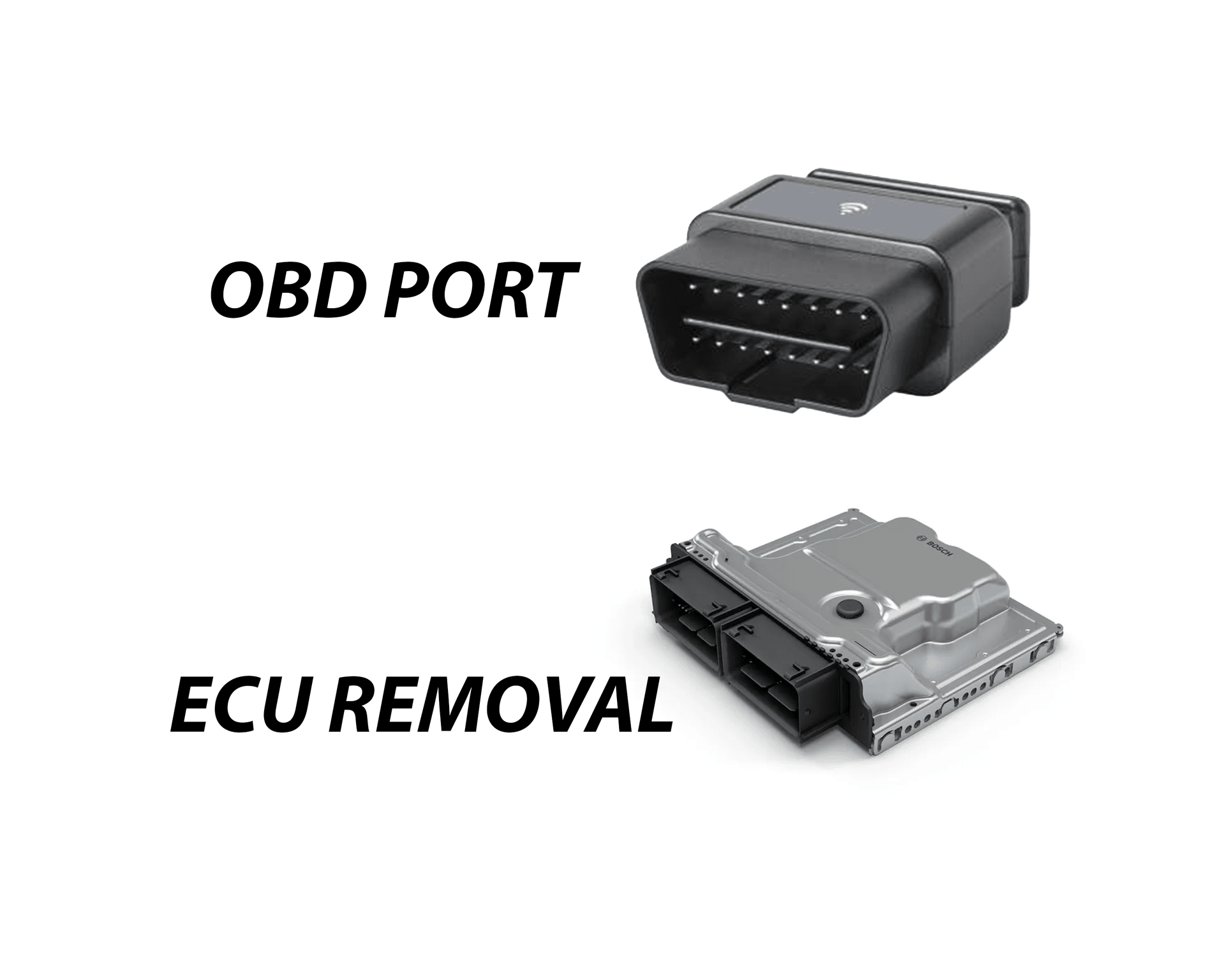PROCESS
Typically, vehicles can be remapped using one of two approaches: through an OBD port connection or via an ECU removal process, commonly referred to as a 'bench' procedure. Both methods yield the same outcome, but OBD port connection is generally favored due to the potential risks associated with removing or opening an ECU. Given the diverse range of ECU variants from manufacturers like Bosch, Siemens, Delphi, and Magneti Marelli, each vehicle requires a slightly tailored tuning process.
OBD PORT
The OBD port connection method stands out as the preferred and most widely used approach for vehicle remapping, owing to its speed, simplicity, and effectiveness. Importantly, it minimizes the risk of hardware issues since it doesn't require any mechanical manipulation. To access the ECU, we utilize a laptop with specialized software and a 'flash' tool, connecting them via an OBD II cable (CAN/J1850/K-LINE) and a USB cable. In certain cases, like the Volvo XC60, direct ECU access is needed, necessitating alternative cables like the 25-pin Bootloader K4 cable to establish a direct K-LINE connection.
The OBD connection process is typically swift, taking around 60 minutes from start to finish, and boasts an impressively high success rate on the first attempt. In the event of software corruption during reading or writing, a reinstallation of the original software restores the vehicle to its stock state, unaffected by the modification. We are capable of performing this process on over 17,000 vehicle variants, with this number continually expanding.
BENCH / REMOVAL
While our preference always leans towards tuning through the OBD port, there are numerous vehicle models for which this method is not viable due to various factors. Firstly, ECU removal becomes necessary when dealing with ECUs equipped with Tricore protection, which cannot be bypassed by the flash tool, or when unlocking specific ECUs like the PIR2.1 or Siemens SIMOS 8.5/16.11, commonly found in Audi S4 models from 2008 to 2015. In such cases, the ECU, typically located in the engine bay, above the wheel arch, or beneath the front windscreen, must be physically extracted from the vehicle to access the Micro, Flash, and EEPROM chips inside. For all ECU removal tasks, we rely on the latest AlienTech Kess 3 Master equipment, known for its speed, safety, and minimally invasive nature.
For most ECU removal assignments, we employ a method called Tricore Service Mode (TSM), allowing us to tune the ECU without requiring it to be opened up. With TSM, we simply detach the ECU from the vehicle and connect our equipment to the edge connector. In some scenarios, this can even be achieved without removing the ECU entirely, by disconnecting the wiring harnesses. For instance, in many Range Rover Sport and Vogue models, the ECU is situated in the engine bay above the passenger wheel and semi-permanently installed with rivets. In such cases, we disconnect the wiring looms, establish a connection to the ECU edge connectors while it's in place, and perform the remapping securely using the TSM method.
In rare instances where the TSM method proves unfeasible, we may need to remove and open up the ECU to directly access the microchips, though this represents the most intricate tuning approach and is seldom necessary thanks to our advanced AlienTech equipment. If needed, we have Viezu who specialise in bench ECU tuning. We will send the ECU to them and they will complete the whole ecu tuning process after we have prepped the ECU.

